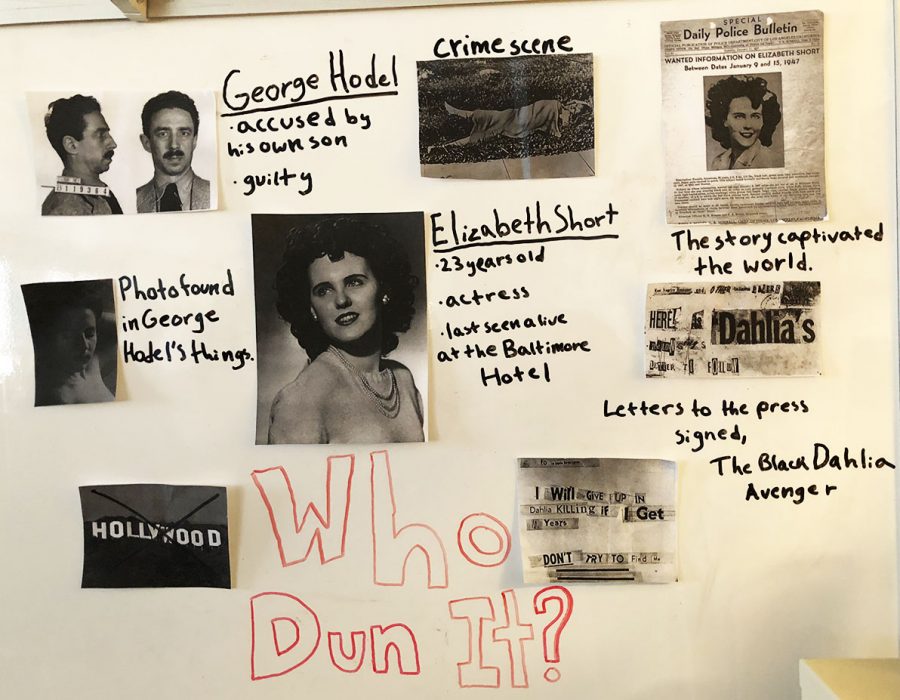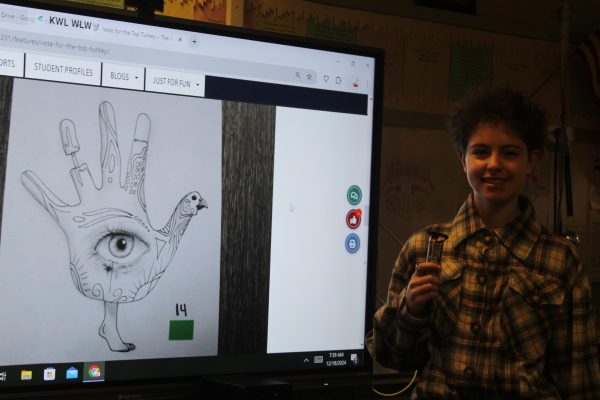Hey There Demons, It’s Me, Ya Girl
Murder, scandal, and fraud; the triple threat of a classic unsolved crime. What is it exactly about old mysteries that fascinate the youth of today? Warped minds and dark areas of interest? Maybe. Whatever the reason, there’s no doubt that crime documentaries and analyzations have taken the entertainment industry by its neck. Take a look at Youtube; you have your classic Buzzfeed Unsolved die hards and of course your everyday Shane Dawson conspiracy theorists. Check Netflix and you’ll see specials like that of “Encounters with Evil”, “Making a Murderer”, “Evil Genius” (a personal favorite of mine), and “Inside the Criminal Mind”. Is your interest piqued? Well take a seat pal, because if you have a tendency to laugh at funerals or live a double life as an amateur sleuth, you’ve come to the right place. Without further hesitation, here are three of America’s most famous cold cases.
The Black Dahlia
Elizabeth Short’s mutilated body was found in a vacant lot on January 15th, 1947. She had been perfectly cut in half right above the waist and her body was drained entirely of blood, resulting in a snow white complexion. She had been posed in a sick imitation of seduction, and her face had been cut from the corners of her mouth to her ears, giving her an everlasting smile. Her killer was never identified, making her murder one of the most famous cases in Los Angeles, California.
Short was discovered by Betty Bersinger and her daughter while they were on their way to the shoe repair shop. Bersinger, who had mistook Short for a department store mannequin, realized what she saw and ran to a neighbor’s house to phone the police. Officers Frank Perkins and Will Fitzgerald answered the call. Arriving first on the scene, they saw the severed woman and called for backup. There was no blood on the body or the ground she lay on, leading the police to believe that her killer had scrubbed her clean before dumping her in the lot overnight. Detective Sergeant Harry Hansen and his partner Finis Brown, senior detectives of the LAPD, were assigned to the case. The body was taken to the LA County Morgue where her fingerprints were lifted and she was later identified as Elizabeth Short.
It was revealed by an examination that the official cause of death was “hemorrhage and shock due to concussion of the brain and lacerations of the face”. After an autopsy, it was declared that most of the damage to the body had been done after she was dead. Dubbed the Black Dahlia by the press, the case quickly took the world by storm.
There are more than a few theories as to who killed Short, the most popular one being that it was George Hodel. The crazy part is that George was accused by his own son, Steve Hodel. A little while after his father’s death, Steve began going through his father’s things. Steve soon found a photo album among his father’s stuff. In the back there were two pictures of a woman he didn’t recognize, but then as he looked closer he realized the woman had a striking resemblance to that of the Black Dahlia. Steve, a former homicide detective, began searching for more details. Short had underwent a hemicorporectomy; a surgery that cuts the body under the lumbar spine, which is the only place where a body can be cut in half without breaking a bone. The procedure was taught in the 1930s, when George had been in medical school. Letters that were sent to the press and police by a person claiming to be “The Black Dahlia Avenger” looked uncannily similar to George’s handwriting. After his father’s death, Steve went back to his childhood home and tested the soil which came back positive for human remains. These results were never directly connected to Short’s murder and the theory that her killer was George Hodel has never been proven.
What Happened To Elisa Lam?
In February of 2013, guests at the Cecil Hotel in Los Angeles began complaining about low water pressure and water that was black and had a bad taste. When staff checked the four by eight foot water tanks on the roof for complications, they found the naked body of twenty-three year old Elisa Lam floating inside. It was estimated she had been dead for about two weeks.
Elisa Lam was a Canadian student who had come to the U.S. to visit the big cities along the east coast. On January 26th, she arrived in LA and checked into the Cecil Hotel. Five days later, Lam was reported missing by her family after they failed to receive their daily phone call from her. The last person to see her alive, the manager of a bookstore Lam had visited, said she was friendly and outgoing. Hotel staff said she had been alone the morning of her disappearance. On February 6th, police posted flyers around the area, asking anyone with information about Lam to come forward. On February 16th, the police released what would soon become a famous piece of evidence: an elevator surveillance video of Lam recorded on February 1st. Lam can be seen acting strangely in the elevator: pushing random buttons, acting like she’s hiding from someone, looking like she’s talking to someone who can’t be seen, and stepping in and out of the elevator erratically. It was shortly after this that Lam’s body was found in the water tank on the roof, eighteen days after she originally checked into the hotel. Her body showed no signs of sexual assault, drugs, or evidence of suicide. It’s a mystery as to how she was even able to access the water tank, as it was propped on cement blocks and had a heavy lid that was not easy to lift, let alone close. Access to the roof was alarmed and locked, and the only other way up was to go out through a window and climb one of the three fire escapes at the hotel.
Some think that Lam, who suffered from bipolar disorder, had a manic episode. Others think she was drunk or on drugs. However, both of these theories were dismissed by the autopsy and toxicology report. This leaves the final theory; that Elisa Lam was murdered. This would explain why she seemed to be talking to someone outside of the elevator, and why she looked like she was hiding from someone. Someone else would have been able to open the twenty-pound lid of the water tank, force or dump Lam into it, throw in her clothes, and then close it back up. In the end, foul play was never indicated by the police and her death was ruled as an accidental drowning.
The Case Of Bobby Dunbar
On August 23, 1912, four-year-old Bobby Dunbar disappeared while on a family trip to Swayze Lake in Louisiana. His devastated family began a search for him, but it wasn’t until eight months later that Bobby was found; or so the world thought.Police arrested William Cantwell Walters in Mississippi after Bobby Dunbar was discovered with him. Walters was charged with kidnapping despite his claims that the boy was not Bobby
Dunbar, but in fact Bruce Anderson; the illegitimate son of his sister. Bobby’s parents were called to come and identify their son. At this time, the mother of Bruce Anderson, Julia Anderson, was also making her way to Mississippi. Some reports say that Bobby’s parents, Percy and Lessie, didn’t recognize the boy at first and that he was missing some identifying features their son had. It is reported that Bobby, not recognizing his parents either, had screamed when he saw them. Other reports say the Dunbars recognized him right away and after giving him a bath, were sure the boy was Bobby Dunbar. Julia Anderson, however, was also convinced the boy was her Bruce. She had given her permission for her son to accompany Walters for a two-day trip, but that had been thirteen months ago. The court exemplified that Julia had had three other children out of wedlock and had seemingly done nothing to get Bruce back in the time he was gone. It was ruled that the boy was Bobby Dunbar and custody was granted to Percy and Lessie, leaving the Anderson family to claim their boy was kidnapped by the Dunbars.
In 1966, Bobby Dunbar died, leaving behind three children. In 2004, Robert Dunbar Jr. and his cousin, the son of Bobby’s brother Alonzo, decided to do a DNA test to confirm that they were indeed first cousins. The results: no relation. Bobby 2.0 had in fact, been Bruce Anderson.
So that leaves the question, what happened to the real Bobby Dunbar? Many believe that on that summer day in 1912, Bobby drowned in the swamp or was eaten by an alligator. It is worth noting that Bobby (Bruce), told a story that when he and Walters were traveling in their carriage, there was another boy with them who fell off of it and died. There is speculation that Bobby, having been kidnapped by Walters after all, was the boy who fell and died.
While theories of drowning and man-eaters run wild, it is clear that the case of what happened to Bobby Dunbar along with Elizabeth Short and Elisa Lam, will continue to remain, unsolved.
If you enjoyed this story, check out some of my favorite true crime programs!
1. Buzzfeed Unsolved on Youtube
2. Encounters With Evil on Netflix
3. True Crime Daily on Youtube
10th grade English teacher Mrs. West is known around the school for her amazing personality and sarcastic attitude towards life. However, I know her as the woman who’s mother worked with the Milwaukee Cannibal’s dad.
So, your mom worked with Lionel Dahmer? Can you tell me about that?
My mother was a nurse at PPG in Allison Park. She worked with this guy (Lionel Dahmer) who was quiet and very well liked; people thought he was nice. Jeffrey Dahmer had made national news but he was out in Wisconsin so no one had connected the dots. It was one of those water cooler gossip things and someone was like ‘you know that’s his son?’. She worked there at the time that his son Jeffery was arrested, and everyone was shocked that he was the father of a kid who did such terrible things.
What did she have to say about Lionel?
He would do very considerate things. He brought in Christmas cookies for them once.
What do you find interesting about true crime and unsolved mysteries?
It’s shocking in the same way that a car accident is and unless you are personally connected to the tragedy, it’s more interesting than heartbreaking a lot of times.
Do you have a case that you think is the most interesting?
The Lindberg baby abduction. Or DB Cooper.











Wilson ♦ Sep 13, 2019 at 11:13
Check out this creepy coincidence in the Elisa Lam case –
https://www.youtube.com/watch?v=pt8lhNNk9So